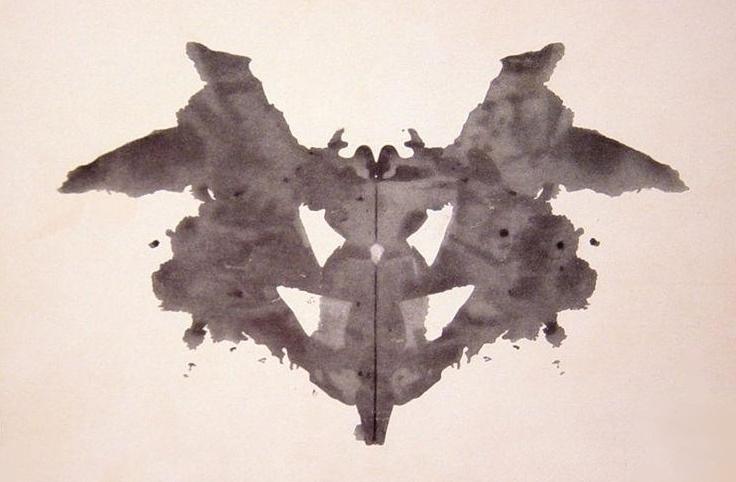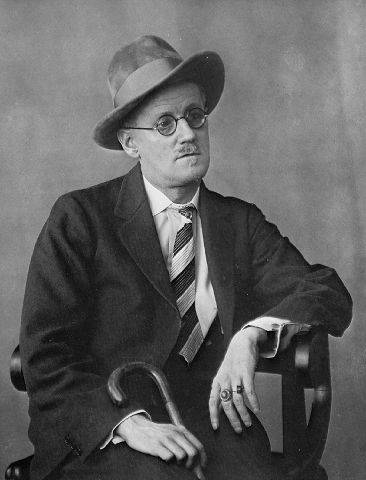The Ap's Ireland: Force, Hatred, History, All That.
Getreligion
The clergy abuse scandal is the gift that keeps on giving as dry and dusty Catholic news stories can always be sexed up by reference to this evil. A recent story from the Associated Press on the opening ceremonies of the International Eucharistic Congress in Dublin is an example. The words "Eucharistic Congress" are likely to induce palpitations in the heart of a reporter who seeks to make a name for himself. A week-long confab of fervent Catholics meeting to discuss the mysteries of the sacrament is not a setting that produces great copy. Write six or seven hundred words about what Cardinal X said about this, or Archbishop Y said about that, and a reporter would be lucky to see 250 words survive the editorial pencil. Finding a way to work in the sex scandal changes the equation. Take a look at this article entitled "Catholic faith on line as church rallies in Dublin" and you can see the transformation of a dull story by focusing on one aspect at the expense of all others. The problem for a subscriber to the AP's wire service however is that they are not getting what they paid for. What they bought was a news story. What they received was an opinion piece that speaks more to the psyche of the AP reporter than to the mind of the International Eucharistic Congress in Dublin. In reading this free form fantasia, my mind too was loosened from the bounds of straight news and it floated off to a Dublin I knew in misty days of yore when The lark's on the wing;My Dublin was not a place but an ordeal a sixth former's struggles with James Joyce's Ulysses. This was a right of passage for English students who were introduced to One Day in the Life of Leopold Bloom 16 June 1904 to be exact. Stylistically varied, full of puns, allusions and jokes, Ulysses introduced the stream-of-consciousness style which allowed the reader not only to follow the events of Bloom's day hour by hour, but also to follow his thoughts and hear the inner rhythm of his needs and desires, joy and despair. Ulysses was a very hard book for me to read, so saturated was it with the life of Dublin and the mental perambulations of its characters. At times I found it incoherent. I took comfort that others did not enjoy this style Hemingway (the other one, not M.Z.) referred to it as 'steam of consciousness' writing. Yet Ulysses marked the end of the dominance of realism telling life as it is in the novel. Which takes me back to this AP story, which does not tell life as it is, but gives free flow to the mental perambulations of its author. Let's start with the lede. An international conference celebrating Roman Catholicism opened Sunday in Ireland against a backdrop of anger over child abuse cover-ups and evidence of declining faith in core church beliefs. That's the way to frame the story, misstate the agenda of the conference and go on the attack. It continues: About 12,000 Catholics, many from overseas, gathered for an open-air Mass in a half-full Dublin stadium at the start of the Eucharistic Congress, a weeklong event organized by the Vatican every four years in a different part of the world. The global gathering, begun in the 19th century and last held in Quebec in 2008, highlights the Catholic Church's belief in transubstantiation, the idea that bread and wine transforms during Mass into the actual body and blood of Jesus Christ.Wait, I thought this was about "celebrating Roman Catholicism" some sort of quasi-tribal rally of the faithful. Instead we have a half-full week long congress on transubstantiation? Bait and switch reader, bait and switch. I've seen other reports that list 20,000 present funny how stories about the Pope's trip to Germany, England and Mexico all seem to start out with low ball estimates that have to be revised dramatically upwards. But I digress An opinion poll of Irish Catholics found that two-thirds of Irish Catholics don't believe this, nor do they attend Mass weekly. The survey, published in The Irish Times with an error margin of 3 points, also found that just 38 percent believe Ireland today would be in worse shape without its dominant church. And just three-fifths even knew the Eucharistic Congress was coming to Ireland.How do we know that these views "reflect rapid secularization and alienation"? It may be reasonable to assume this based upon the increasing secularization of society and the scandals of recent years, but what evidence is there in the article that takes us from A to B? And how does the rate of belief in the real presence as found in the survey relate to past levels of belief or to rates of belief in other countries? Surveys conducted by Georgetown University's Center for Applied Research in the Apostolate (CARA) would indicate that Ireland is doing better than the U.S. on this point. There is no context provided to judge the numbers only the assertion that this is a bad thing. And Is it fair to compare the 1932 Phoenix Park mass to the 2012 Dublin opening ceremony? The 26 June 1932 open air mass in Phoenix Park drew almost 1 million people. But discussions of transubstantiation at the 1932 Eucharist Congress did not bring in the crowds it was Pope Pius XI and the Irish government. The pope addressed the crowd from his library in the Vatican and was the first time a pope directly spoke to the Irish people. A better comparison might be Pope John Paul II's 1979 mass in Phoenix Park, which also drew almost a million people. Juxtaposing 12,000 (or was it 20,000) people with a million people appears to be an attempt to advance the rather tired "Ireland is losing its faith mantra". The 1932 Eucharistic Congress was a political, cultural and religious event. It was a celebration of Irish Nationalism and Roman Catholicism and showcased the success of the Irish Free State. Éamon de Valera heavily promoted the congress as a symbol of republican Ireland being a Catholic state for a Catholic people. It also cemented the relationship between Fianna Fáil and the church which culminated in the 1937 Constitution which recognized the "special place of the Catholic Church" in Irish life. We get a hint of this in the article, but the author ignores this and compares attendance between the two congresses in an attempt to denigrate the 2012 gathering. The quip about "nary a dissenting voice" is unsubstantiated as Protestants and Unionists (what few that remained south of the border) objected to the rally in 1932 as a sectarian political show. Fast forward to 2012. The AP reports: And as Catholic pilgrims entered the opening Mass, they passed protesters from Survivors of Child Abuse, an Irish pressure group that has spent more than a decade demanding that church leaders in Ireland and Rome admit their full culpability for the protection of pedophile priests. Other protest groups highlighted the church's opposition to homosexuality and its role in running most Irish elementary schools and many hospitals today.Today we have gay rights activists protesting (where the friendly folks from Westboro Baptist Church there?) as well as abuse victims advocates. How many protestors is not stated. Different issues separate 1932 and 2012, but protests there were. Yet one of the major angles in this story that the AP managed to miss was the inclusion of Protestants in the Congress. The Church of Ireland's Archbishop of Dublin, (the other archbishop) was among the speakers at the opening service. Two Archbishops of Dublin were present, Protestant and Catholic, Dr. Michael Jackson and Dr. Diarmuid Martin. Nor was Dr. Jackson's presence window dressing as Presbyterian, Methodist and other Protestant leaders took part in the ceremony. For goodness sakes even a contingent from the Church of Ireland's Boys Brigade took part in the march. Remember a time when Irish news was dominated by the "troubles" that Protestant/Catholic thing that went on for a few decades? In its fixation with the abuse scandal the AP has managed to miss one of the significant changes in Irish life made manifest by this congress the virtual end of Protestant/Catholic discord. The article continues with its focus on the abuse scandal, highlighting those moments from the opening day where congress organizers addressed the abuse issue. Readers were also treated to this assertion. Four state-ordered investigations over the past decade have documented how tens of thousands of children from the 1940s to 1990s suffered sexual, physical and mental abuse from priests, nuns and church staff in three Irish dioceses and in a network of workhouse-style residential schools. More investigations of other dioceses beckon. Tens of thousands of children suffered abuse? Where does that number come from? In 1999 the Irish government began a ten year investigation into incidents of abuse in Church-run reform schools and educational institutions: the places where the bulk of the abuse took place. In its 2010 report, the Commission to Inquire into Child Abuse found that between the period 1914 to 1999, 253 claims of sexual abuse were made by males and 128 by females. Were these all the possible claims? No. But "tens of thousands"? Does the AP have information on at least 19,619 other cases it says took place? Let me stop at this point and address the question why this matters. One or one thousand children abused are too many abused children. It is a shame, a horror, a crime that tarnishes the church and society. However, when the abuse is inflated to hyperbole, when imaginary victims are created to make an argument that the church is corrupt, the abuse suffered by real people is cheapened. Their suffering is diminished and is expropriated by those advancing a political agenda. In a situation of suffering it is reprehensible to exaggerate for effect. And it is bad journalism. The reporting in this story shows no understanding of the issues, no sense of the story, no sense of the people. It tells us nothing of consequence about the Eucharistic Congress, but a great deal about what the author thinks of the Catholic Church. It is an anti-Catholic editorial masquerading as news. When you are going to make tea, make tea. When you are going to make water, make water. Don't try to make them in the same pot. When you are going to write an editorial, write an editorial. When you are going to write news, write news don't try to do both in the same story. Stream of consciousness reporting didn't work here. The AP would have done a better job of sticking to realism.
|
.
Any original material on these pages is copyright © BishopAccountability.org 2004. Reproduce freely with attribution.

